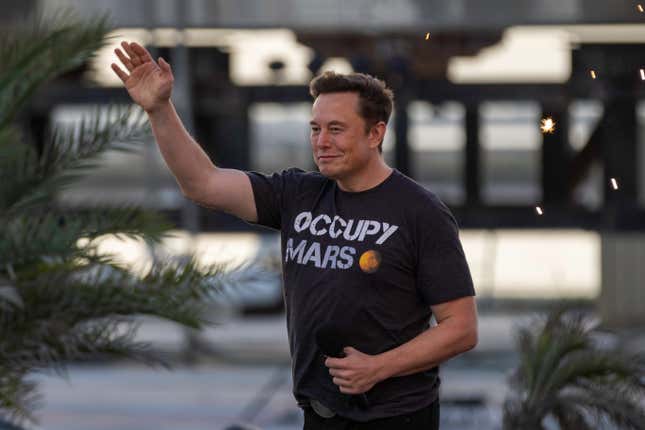
Elon Musk seems to think the sky isn’t SpaceX’s limit — and maybe not even its revenue ceiling. The CEO said on Tuesday that his company is on track to generate $15.5 billion in revenue in 2025, a leap from last year’s estimated $11-13 billion.
Musk posted SpaceX’s revenue projections on X and added that, in “perhaps an interesting milestone,” SpaceX’s commercial revenue from space will exceed NASA’s entire budget in 2026. The company will make about $1.1 billion alone through its work with NASA this year.
SpaceX is one of the world’s most valuable privately held companies, and its revenue is largely driven by two segments: its launch services and Starlink, its global satellite internet division. In February, Starlink claimed to have over five million customers worldwide; its base reportedly doubled from 2023 to 2024. Musk has said Starlink will go public once cash flow becomes more predictable — but hasn’t specified when that might be.
Meanwhile, SpaceX completed 134 launches in 2024 and is aiming for as many as 170 this year (it has already launched 62 times in 2025) — more than any other company or government space agency. Most of these are Falcon 9 missions, which have been used to deliver commercial satellites, government payloads, and NASA cargo.
The rockets’ reusability has been an advantage, and frequent launches have helped SpaceX secure a large share of the global market. But competitors such as Blue Origin and some international players are making progress, meaning the commercial launch market is getting more crowded.
Much of the SpaceX’s revenue is being plowed directly into the company’s Starship program, which Musk sees as the key to interplanetary expansion — namely his plan to colonize Mars. Each Starship launch costs around estimated $100 million; Musk has said his goal is to lower that to around $10 million.
But Starship has yet to demonstrate full mission success. A recent launch went father than ever before — but still ended with the rocket spinning out of control.